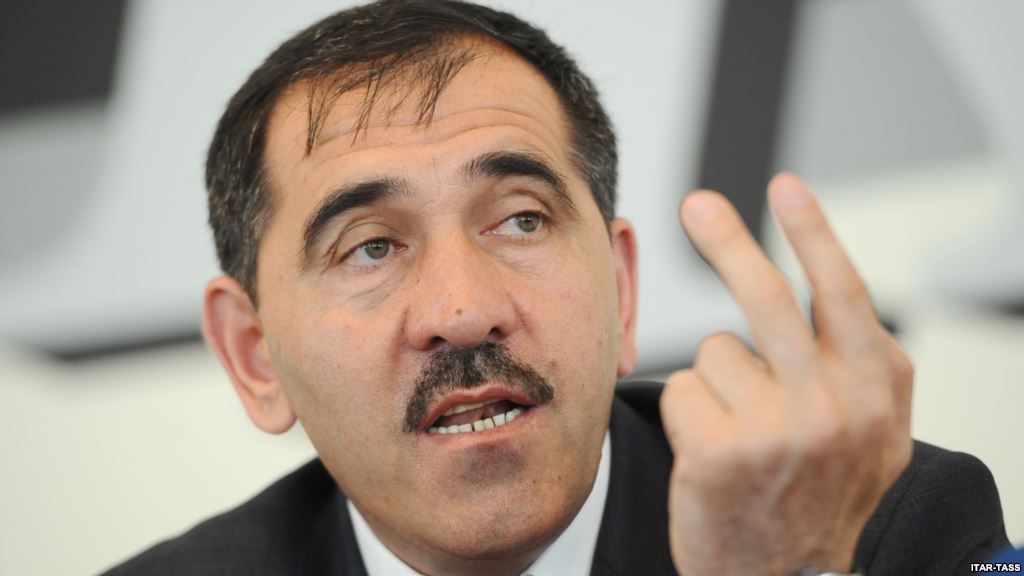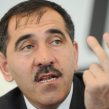
Ingushetia’s Yevkurov Appears to Back Blood Revenge Against Militants’ Relatives
Publication: Eurasia Daily Monitor Volume: 11 Issue: 140
By:

One of the favorite activities of the governors of the North Caucasian republics is to frequently count the number of rebels in their respective republics. Every year they lower the figure for the number of rebels in their region and highlight for Moscow their personal role in “weakening” the rebels.
This time, the head of Ingushetia, Yunus-Bek Yevkurov, conducted a census of the militants in his republic. In his opinion, up to 25 active members of the armed resistance remain on Ingushetia’s territory. According to Yevkurov, these people may stage isolated attacks but are unable to launch any significant assaults (ITAR-TASS, July 25). Ingushetia’s governor also asserted that “about eight bandits are hiding abroad.” In other words, they went to Europe and are lying low so that they can be forgotten. Naturally, this type of information could have been obtained only through putting pressure on the relatives of suspects. If a suspect leaves Russia, his relatives are required to prove it, so that the Federal Security Service (FSB) can be sure the person is out of the country rather than in the forests or mountains of the North Caucasus with the militants.
Yevkurov also said that only 12 ethnic Ingush are in Syria fighting against the regime of Bashar al-Assad. Thus, the Ingush authorities have apparently been unable to confirm their earlier estimate that up to 30 Ingush were fighting in Syria (lentari.ru, July 25). However, the claim that only 12 Ingush are fighting in Syria is probably an underestimate, given that Ingush have been actively involved in fighting Russia’s ally Assad (habar.org, March 8, 2013).
Yevkurov also touched upon the issue of rehabilitating and adapting militants to civilian life, saying that he expected the activities of the republic’s rehabilitation commission, which has the goal of returning militants back to civilian life, to continue. According to the Ingush leader, nearly 70 people have applied to the rehabilitation commission, and 45 of those rehabilitated were either members of the insurgency or active accomplices. “The commission is functioning well and yielding positive […] results,” he said (ITAR-TASS, July 25). It is not entirely clear who the remaining 25 people are if, out of the 70 people who were rehabilitated, 45 were members or accomplices of the armed underground. Who were the 45 who needed to be rehabilitated? Given that the head of Ingushetia established this commission by decree on September 20, 2011 (newsland.com, September 5, 2011), the figures mean an average of 15 people have surrendered to the authorities each year. The commission has never identified a militant who was on the police or FSB wanted list and then surrendered. This suggests the commission’s efforts are not really serious and this body is designed to give the impression that the Ingush leader is strenuously fighting the militants. The rehabilitated people were most likely individuals who were blacklisted as Salafist supporters.
Yevkurov emphasized that, within the limits of the law, the authorities intended to influence and punish the relatives of members of criminal groups if the latter commit new crimes. “Until now we have acted with a great restraint and have attempted to restrain the relatives of those who were killed by the militants from taking blood revenge, but we will no longer do that,” he said. “I have tasked the Security Council of Ingushetia to spread the information on and photographs of all the bandits and those they killed in the republic. Let everyone look and know” (newsru.com, May 29).
The head of the republic was essentially calling for blood revenge. This will cause a chain reaction in a society in which the pre-Islamic traditions of vengeance still run strong. By vilifying the relatives of the militants, Yevkurov is practically expanding the conflict in Ingushetia. The underground fighters in Ingushetia today are not like those in the republic at the start of the second Russian-Chechen war in 2000, when they would go underground to take revenge or escape the authorities. Today’s militant is an ideologically well-prepared young man who has consciously chosen to fight the government and cannot be stopped through threats made to his relatives.
Responding to a question asked by the editor-in-chief of the Kavkazsky Uzel website about the most dangerous area in Ingushetia in terms of militant activities, Yevkurov unequivocally pointed to the Sunzha district, which borders Chechnya. In Yevkurov’s words, “here we have a stable bandit group of about 15–17 bandits. In Arshty and Chemulga—that is, on our territory—there are also members of the bandit underground who have access to other areas [outside the republic]” (Kavkaz Uzel, July 19). This would mean that in just in the area of Ingushetia alone there are 15–17 rebels, and therefore the rest of the republic has only 8–10 rebels—something that cannot be taken seriously despite the propaganda claims of Ingushetia’s government.
Thus, willingly or not, the leader of Ingushetia admitted that the district on the border with Chechnya is the most problematic one. Yevkurov also conceded that no rebel who is well-known or on the police wanted list has ever surrendered. So, the Ingush authorities, despairing of being able to control the situation in the republic, are prepared to allow reprisals against relatives of militants. Yevkurov also admitted that the Ingush are fighting in Syria. Essentially, the situation in Ingushetia now is the same as it was in 2012 and 2013. The figures may fluctuate, but the basic situation involving the armed underground movement remains the same.




